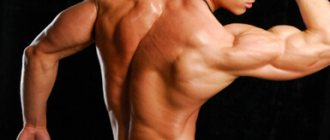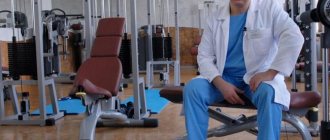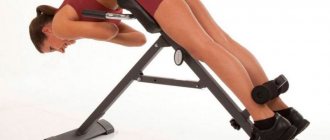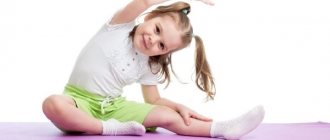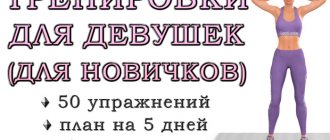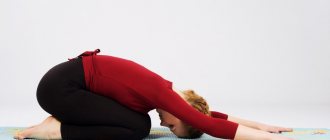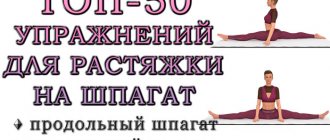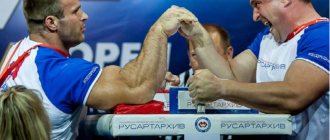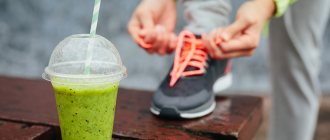Regardless of various sports and lifestyle, a flexible back is the key to a healthy spine and an indicator of the level of physical fitness. However, many professional athletes neglect exercises for back flexibility, which almost always results in a number of serious problems. These will take months to correct, almost stopping any progression. Taking 5-10 minutes after exercise or throughout the day to stretch and develop flexibility in your back will help prevent many problems. It will also significantly improve your level of physical fitness and spinal health.
Benefits of Back Flexibility
The spine is the main reason for human mobility. Without it, up to 80% of all movements would be impossible. The back muscles are not only protective, but also the basis of most functions associated with upper body movement. Without exercises to develop back flexibility, the muscles will shorten, which will lead to a number of negative consequences, from worsening posture and the risk of hernias and protrusions, to problems associated with the functioning of internal organs.
The main risk factors are:
- Lack of physical activity.
- Sedentary work and sedentary lifestyle (less than 8-10 thousand steps taken per day).
- Playing sports without developing back flexibility.
- Prolonged standing (for example, security guard work).
- Sleeping on the wrong mattress.
Exercises for a flexible back are the main method of prevention and allow you to neutralize all negative factors. Along with developed muscles, stretching is the main way to improve and maintain back health.
Why does hyperlordosis occur and what is dangerous?
Common causes of acquired lumbar hyperlordosis include excess weight, pregnancy, osteoporosis, spondylolisthesis, and a sedentary lifestyle.
Walking in heels is also often cited as a cause of hyperlordosis. However, scientistsMeasurement of lumbar lordosis in static standing posture with and without high-heeled shoes have not confirmed this dependence.
Deformation and displacement of the vertebrae with lumbar hyperlordosis threaten pinched nerve roots, intervertebral hernias, inflammation of the muscles surrounding the spine, and other complications.
How to make your back flexible
In order to make your back flexible, you don’t need to use any secret techniques or learn yoga. It is enough to systematically perform the basic elements. Just as lifting weights develops muscles, stretching makes them more functional by increasing mobility. This is a long process, the result of which will depend only on the duration and regularity of training.
It is also worth considering that increasing back flexibility does not mean developing the skills of a gymnast, dancer or ballerina. Excessive stretching will be no less harmful than muscle tightness, leading to joint hypermobility and other negative consequences. Therefore, you need to train flexibility in a standardized manner, without fanaticism. It is optimal to add stretching complexes in the following mode:
- Once a day, 4-5 minutes.
- Only after training and any physical activity.
- After waking up or shortly before sleep.
For beginners, back flexibility exercises can be done less frequently - every other day for 2-3 minutes. To do this, simple movements are selected. Doctors also recommend maintaining tension when stretching for 15-25 seconds, no more. That is, if you, for example, are stretching the latissimus muscles, the optimal option would be a set of three repetitions for 15-25 seconds (with a short rest, up to 50-60 seconds).
Features of classes and safety precautions
To learn how to arch your back correctly, you need to realize a few things. Performing any of the exercises includes a spinal extension phase. At the beginning, from a standing or sitting position, straighten your back, trying to smooth out all the deflections. At the same time, the chest rises and the stomach tightens. Only then do they take the indicated position and maintain the required time. This is the most important safety condition.
It is important to understand exactly what position of the pelvis is normal. Otherwise it cannot be controlled. To do this, you need to lie on your back, bend your knees and place your feet at a comfortable distance from your pelvis. In this case, a gap appears between the back and the floor. This is the correct position. To stabilize it, they do this: press the lower back to the floor 10 times, and then relax the muscles so that the spine returns to its normal position.
The exercise is performed until you feel stretching or pleasant tension. Painful symptoms are excluded. The goal is not to take the pose with all your might, but to relax and tense the muscles at the right moment.
For prevention, exercises must be performed periodically for the rest of your life.
Top exercises for a flexible back
Let's look at the top most effective exercises for back flexibility at home or in the gym. These are universal movements that can be performed anywhere. It is also worth considering that some exercises may have different names (for example, cat/dog or cat/cow), although they mean the same movement.
Cat/cow
This exercise comes from yoga, although today it is used in all complexes. It is completely universal and ideal for making your back flexible at home (it does not require any equipment, just a couple of meters of free space).
Technique:
- Take a position on your knees and palms. In the initial position, the knees should be at a right angle, the arm should be perpendicular to the floor.
- Begin to slowly round your back, trying to point it up as much as possible (in the form of an arch).
- Hold the position for 5 seconds, then smoothly move to a position with an arched back.
- Lower your stomach as much as possible (a feeling of strong stretching) and arch your back in the lumbar region.
Key Points: Neck movement is phase dependent. When rounding the back, the neck looks down in a natural position. When the back is arched, the neck looks up diagonally. Also in this position you should bring your shoulder blades together.
Lat stretch against the wall (barre)
Under ideal conditions, the exercise is done in front of the choreographic machine. However, it can be performed in any conditions, even near a wall.
Technique:
- Stand sideways to the wall at a step distance (the length depends on your height). Tilt your body towards the wall and press one hand so that it is parallel to the floor.
- Pull your other arm toward the wall, feeling the stretch in your lats.
- Hold the position for 5-7 seconds, then change hands.
In the gym, this exercise is performed near any machine that allows you to fix the position of the body.
Deflection at the wall
The exercise is partially similar to the “cat/cow” movement, but allows for greater stretching of the lumbar and cervical spine. It is performed in any place where you can lean against the wall (or hold on to the exercise machine).
Technique:
- Go to the wall and face it. Bend over and place your hands on the wall (so that your body forms the letter “L”).
- The head is tilted, the neck is in a natural position.
- Begin to lower your neck down while rounding your back. The pelvis and buttocks need to be “pulled in” (put forward) so that your spine forms a bent arch.
- Hold for 5-7 seconds, then slowly move to the next position.
- Raise your head slightly up and arch your back as much as possible, pushing your buttocks back.
- Pause for 5-7 seconds and return to the first position.
It is enough to perform 3 position changes per approach.
Lower back stretch while sitting on a chair
The most important exercise for the lumbar region. There are many techniques for developing flexibility in this area, but the safest option is considered to be on a chair. It also perfectly stretches the latissimus muscles and shoulder girdle.
Technique:
- Sit on a chair. Slowly lean forward, rounding your back.
- At the bottom, lift your heels slightly and hold them with your fingers.
- Stretch as hard as possible for 5-7 seconds, then return to the starting position.
Training goals and objectives
Exercises for deflection of the lower back must be done carefully, developing the articulations of the vertebrae. Lumbar
deflection is lordosis, a bend with protrusion of the spine inward. The vertebrae here are massive, as they support half the body weight. With anatomically correct bends, the vertebrae are located exactly above each other - congruently, and taking into account the bend. In this case, the joints remain mobile relative to each other, but at the same time maintain a stable body position in any position.
Violation of the articulation of the vertebrae inevitably leads to disease. The spine can no longer withstand even ordinary household stress. To stabilize the position, the muscles around the joints tense too much, becoming hypertonic and causing pain. In the absence of sufficient bending, the pelvis moves forward, which disrupts the normal functioning of the hip joints. Posture deteriorates: with a flat lower back, the stomach protrudes forward, and kyphosis in the upper back increases in order to compensate for insufficient lordosis.
Poor posture provokes displacement and prolapse of internal organs. This change occurs slowly, but is fraught with serious complications.
Lordosis combined with well-developed gluteal muscles provides a beautiful body contour. At the same time, the waist seems thinner, the buttocks are higher, and the stomach automatically tightens with correct posture.
At the same time, it is recommended to pump up the muscles to avoid displacement of the vertebrae.
The purpose of the exercise to improve the deflection in the lower back is to restore the correct position of the vertebrae and the functioning of the back muscles. The aesthetic factor is also taken into account.
- Returning the vertebrae to the anatomically correct position - exercises force the joints to move relative to each other in the opposite order. The same effect can be achieved by constantly and consciously maintaining the correct position of the back. However, constant control requires too much strength, and prolonged tension, even in the correct position, still causes pain in the lumbar region. Exercise has a stronger but shorter-lasting effect.
- Relieving spasm - to compensate for the lack of stability of the vertebrae, the muscles around them become very tense. Gymnastics for the spine first forces overstrained muscles to contract more strongly - “to overcome the spasm” - and then to relax. This is the most effective way to get rid of pain.
- Increasing the distance between the vertebrae. When displaced, the intervertebral discs become deformed and flattened. The correct position and work of other muscles during exercise relieves the discs from excess stress. The spine is stretched, aligned, and becomes more mobile. It is this effect that ensures the flexibility of ballerinas and gymnasts.
- The deflection returns the pelvis to its normal position.
You can also pump up your muscles with exercises. However, this is not the main goal. On the other hand, a pumped-up lower back does not allow the spine and pelvis to take an incorrect position.
Gymnastics for stretching the back and spine
Exercise machines are, of course, good, but the best, safest and most accessible exercise for the back is static gymnastics on a roller. It gently stretches the vertebrae, straightens posture and solves many problems with the spine.
After 5 minutes on the roller, you will walk with a straight back all day, and an evening workout will help you quickly relax the muscles that have become stiff during the day.
Watch the video to see how to do this exercise correctly:
Indications and contraindications
Stretching the vertebrae is not a panacea for all back diseases. You need to clearly understand that in some cases stretching is useful and necessary, and in others it is contraindicated. Based on this, you should not engage in stretching exercises without the approval of a doctor or his recommendation.
In the clinic, traction is performed in the following cases, each with a number of reservations.
- Cancellation of displacements and dislocations, elimination of shifts after fractures. But after traction, the elongated vertebrae are always fixed in the achieved mode. Otherwise, the procedure makes no sense and is ineffective.
- For scoliosis, traction is carried out along with the rest of the treatment complex, which includes massage, gymnastic exercises, wearing a corset, and swimming. Only stretching can provoke even greater curvature and injury.
- With osteochondrosis, most doctors do not practice traction, arguing that even a slight impact on the vertebrae in this situation can lead to problems in them and in the discs.
- The hernia requires traction; it helps the patient avoid complex surgery and be cured non-surgically.
Spinal stretching must be done correctly
Important! For any pathology of any spinal zone, it is necessary to control the degree of traction, since each spinal segment has its own stretch limit, exceeding which will provoke a spinal injury.
Prices for posture trainers
Any physical action to stretch areas of the spine has certain contraindications. They should not be ignored, because otherwise you can not only aggravate existing diseases, but also acquire new ones.
- Traction with existing arthritis and complicated osteoporosis is prohibited.
- It is not recommended if there is a history of hypertensive abnormalities or heart and vascular diseases.
- Stretching during thrombosis is strictly prohibited.
- Back stretching should be done with caution during pregnancy and menstruation.
- Patients with active colds and viral diseases should also avoid stretching, especially if they are accompanied by fever.
Stretching is performed after making sure that there are no contraindications to exercise.
Advice. When performing physical therapy exercises, you do not need to overexert yourself or do something through force. If the spine “does not bend,” do the exercise to a comfortable permissible angle of deflection, gradually increasing it. If you experience any discomfort or weakness, stop exercising.
Overexertion during exercise is harmful
Prices for mats for yoga and fitness
Why is plasticity lost?
The range of motion around joints is very specific and varies by body part and individual characteristics. Muscle flexibility is primarily related to genetic factors and physical activity.
Range of motion is affected by joint structure, ligaments, tendons, muscles, skin, age and even body temperature. The older we get, the more muscles and their weight contract. In addition, the tendons that attach muscles to bones have reduced water content. This makes the tissues more rigid and reduces their mobility.
The more often we stretch our muscles, the longer and more flexible they become. As a result, we get the following advantages:
- Wide range of motion
- Reduced risk of muscle and joint injuries
- Reducing back pain
- Improving balance, thereby reducing the risk of falls
- Improved posture
We straighten the spine yourself at home
Setting your own bones can be dangerous. Therefore, it is better not to self-medicate.
The only thing you can do with complete safety is lie on the cushion. It instantly puts your back in place and after class you keep your posture correct for several hours.
We have already described the magical properties of the roller above and truly consider it the best invention of mankind. Therefore, order it quickly on the website Beauty365.ru. And while you're waiting for your order, you can already start changing your back for the better by making a bolster with your own hands. Simply take a towel and roll it tightly into a roll about 10cm in diameter.
What are the benefits of stretching for the spine?
Stretching has many advantages:
- It makes you flexible and gives you freedom of movement;
- Provides prevention of various diseases;
- Reduces or completely eliminates pain.
The muscles of the spine are in tension almost all the time. A sedentary lifestyle only increases the load. Even at night, the back cannot fully rest - a too soft mattress, a high pillow and an uncomfortable position cause the muscles to spasm. As a result, in the morning the body becomes stiff, moves with difficulty and simply does not allow you to fully live and work.
A set of exercises to improve flexibility
“Your back feels like wood” - are you familiar with this expression? Have you managed to experience it yourself? Then it’s time to urgently stretch the spine - this will add flexibility. Sagging in the doors will help you with this:
Do you feel stiffness in your shoulders? Do a special exercise to relax the shoulder girdle:
Even more useful techniques that will help you achieve ideal posture at the Basic Marathon “SmeloNET”. There you will not only stretch your spine and get rid of pain, but also work on your face and your entire body as a whole.
What is traction (traction)
Traction is a technique for treating various diseases of the spine. For example, it is used for radiculitis, hernia or severe neck pain.
The essence of traction is that spinal deformities are removed using traction. But the procedure should be approached with caution, with a doctor’s recommendation, and do not forget about general muscle strengthening.
The hood can be dry or underwater:
- Dry can be practiced at home. It will require special devices.
- Underwater traction is especially good for those who struggle with osteochondrosis. Because all muscles relax in water.
What happens to the muscles
With any violation of posture, excessive rigidity of some muscles and weakness of others are observed. And lumbar hyperlordosis is no exception.
Here is a list of stiff muscles that pull on the spine:
But here are weak muscles that are constantly in a stretched position:
When is spinal traction used?
This is a very controversial issue for specialists. Some claim that stretching is beneficial for almost everyone, while others prohibit their patients from doing the exercises.
Here you need to rely on your feelings and the opinion of the attending physician whom you trust. He will definitely be able to choose a complex that is right for you.
Well, a roller is useful for everyone - these days, almost everyone complains of back and neck pain. This is not surprising, because our lifestyle has become sedentary. Therefore, be sure to set aside 5 minutes from your day for static gymnastics.
Tips for beginners to develop body flexibility
Obviously, tight muscles do not function properly, so you need to approach training with extreme caution to avoid harming yourself. Adhere to the following rules:
- Warm up your muscles before stretching them. This strengthens the respiratory and cardiovascular systems, and also supplies the muscles with oxygen, which protects them from damage.
- Start working muscle groups from top to bottom. Start with the head and neck, gradually move to the arms, shoulder girdle, then engage the body and legs.
- Stretch slowly and in a controlled manner (without jerking), to a slight tension. Under no circumstances should you experience acute pain.
- Hold the position at the peak point for 10 to 20 seconds.
- Do not hold your breath while doing exercises. This can cause heart strain or even fainting.
- Stretching regularly if you want to see results.
Basic principles of therapeutic exercises
Before you begin, you need to read the warnings and understand the correct technique. Only after this exercise therapy for lumbar lordosis will be most effective.
You should start with a minimum load, increasing the complexity
Any physical activity requires getting used to. You need to increase the pace gradually, adding new exercises to the basic complex.
There should be no pain when performing
Exercises for lumbar lordosis should not cause pain. If the patient experiences dizziness, pain in the spine, or nausea, then stop the exercise immediately. Physical therapy should not force the patient to overcome pain.
Warming up light workout
Before starting exercises, the body needs to be stretched. It is important to work all muscle groups, not just the back muscles. Warming up will warm up your muscles and help prevent strained ligaments. Warm-up is the key to 100% effectiveness of exercises for lordosis of the lumbar spine.
Correct lumbar arch
To begin with, each of my readers should ask the question, does she naturally have the correct back arch in the lumbar region? The normal condition involves 4 arches in the back, two of them are located in the thoracic region and the sacral region (kyphosis), and the remaining two are in the neck and lumbar region (lordosis). With natural bends in these areas, balance is ensured, and most importantly, it prevents excessive shock-absorbing pressure on the spinal discs.
Any violations of posture are manifested by characteristic symptoms, and the causes of excessive deflection can be:
- pregnancy;
- excess weight;
- frequent sitting and sedentary lifestyle;
- osteoporosis;
- spondylolisthesis.
Only if the lumbar arch is correct will any physical exercise to pump up the buttocks be effective. Otherwise, this can lead to pinched nerve roots in the spine, hernias and other consequences. Therefore, I advise you to carefully examine your posture in the mirror and check for the presence of lordosis or kyphosis.
General rules for stretching
When stretching, you do not need to make sudden movements. But a warm-up is still necessary to warm up the muscles.
During classes, remember several important conditions:
- Movements should be slow and smooth;
- If pain occurs, you should stop training and rest a little;
- Make gymnastics a habit and do it every day. It is best to do the exercises in the evening;
- Try to relax your muscles as much as possible. Breathing should be smooth and calm;
- The stretching pose must be held for 10-20 seconds.
It is not necessary to perform the entire set of exercises at once. It is best to increase the load gradually. If some movements cause the most pleasant sensations, you can repeat it 2-3 more times.
Relaxation of the lumbar spine
This is where our favorite roller comes to the rescue again! It improves the condition of the entire musculoskeletal system, straightens posture, relieves spasms and tension. As a result, the spinal axis is aligned, pain disappears, the chest rises, lowered organs fall into place, blood circulation and even vision improves!
The cushion can be placed in several places, but if you are worried about stiffness in the lower back, place it in the waist area and lie there for at least 5 minutes every day.
As a result, your lower back will begin to feel better, and your waist will become narrower. Yes, this is another additional “bonus”.

